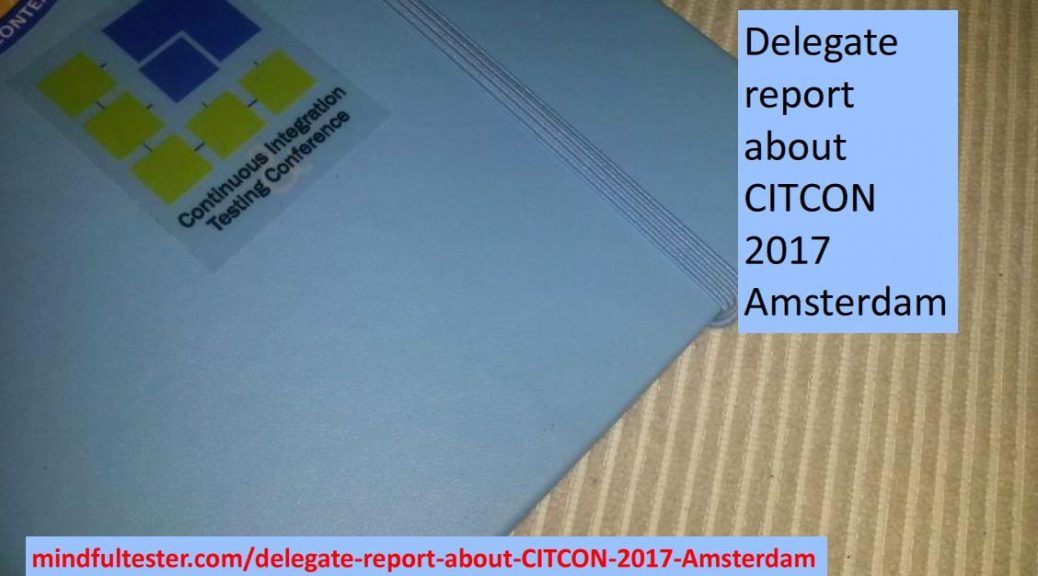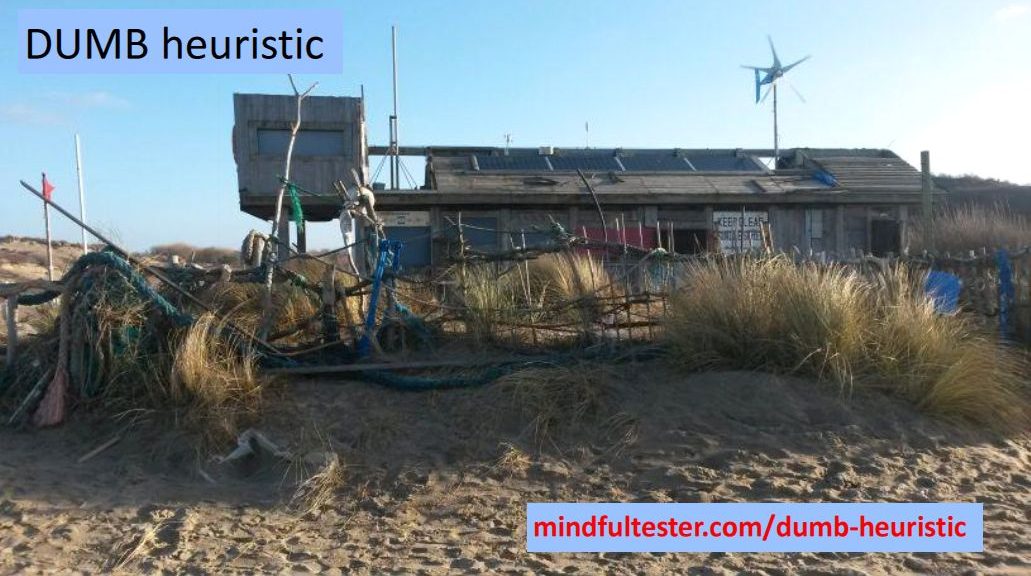“We did it already 14 times.”
Jeff paused for a moment, “and this one was amazing.”
He was quite modest.
Gotta attend this 1
A few months ago a speaker told about his experiences at a conference. He had difficulties to make contact. One of the responses intrigued me. Mohinder Khosla mentioned CITCON in Amsterdam.
For a Dutchman this was interesting. The price was also reasonable 0 Euro with a modest request to cover the costs. But how could I determine whether the price was right? Among the participants I noticed Gojko and Cirilo. Wow. Then I read a recommendation of @testobsessed and I was sold. I mean the ticket.
Not bad for a conference with a marketing budget of 0 Euro.
Evening 1
Before I want to describe, what happened, I have a small warning. This post will focus on the process and not on the content. The reason I chose to is simple: people came there to share information and difficult situations. So reader beware.
Now it is my task to draw you in the atmosphere of CITCON 2017 Amsterdam.
The first day I used public traffic to go to the venue. It was hosted by Xebia. This office had all the elements to affect people’s mood. There was a standard meeting room with glass walls, a comfy corner including sofas and game computer. Did I mention the TV? There were rooms where I could see concrete shining through.
Evening 1 started awkward. I only knew one participant and he was not present, so I talked with new people. The talks were friendly with a formal undertone. Really polite. Just probing around.
Jeff and P.J. started the conference in a room with more than 100 seated people. They casually introduced the format. Asked for feedback (“5 stars is good.”). And let all participants introduce themselves and telling about things they were excited about or personal struggles. Those small stories let me connect to the people telling them.
The subject proposal session was described. At the moment everyone felt at ease P.J. and Jeff told, that they would take a step back. They would only help in case of problems. It was “your conference”. This lead to an extension of the Q&A. After the last question the organizers withdrew from the flip boards. It was up to us, the delegates.
After the warming up the real stuff started people were requested to pick a subject and clarify it to the audience. A queue formed in the room. People with posts its interested in solutions or volunteering to share information.
I watched the process for a half hour and I noticed the time. Time to send text message to my family, that I would come home later.
I really liked the way, how the subjects were presented. The question part was really clarifying. Participants tried to understand the content. The atmosphere had changed: it was warm and people were supportive.
Let me give an example. I proposed a session to share information about blogging. For me it is a way to clarify my thoughts and reflect. I was questioned about it:
“Why do you call it ‘Blogging as a service’”?
“I needed a title … and it is a service to the Community and outside the Community.”
BTW there was also a session proposed “What’s in it for me?” It was listed In the final program.
After the subject proposals I voted and went home. Afterwards I heard from a fellow Dutchman, that he was requested to compose the program. He kindly declined. He had already arranged the venue. This was a reasonable excuse.
Morning 1
The next morning I entered the office, where I had a small chat with Pati about conferences and IT. I skipped my second breakfast and collected a good coffee. There was a friendly buzz in the air.
I went to the program and browsed through the stickies on the flip boards. My session about blogging was accepted. Yay. Then the bad news sank in: there were too many interesting sessions at the same time. That happened to me years ago.
I arrived early for the first session. I remembered that several stickies or subjects were combined. The room was quite big for the small group. I moved my chair to the middle of the room for better interaction.
The first session was about testing and I tried to participate as good as possible. I had to watch my politeness, but I had no time. The subject was too interesting. I bent slightly forward and started contributing. I was in business mode: polite and helpful.
The day before the code of conduct was explicitly mentioned. Proper use of language was also checked :
“Can I use the F word here?”
For the second session I had to find the stairs. Glass walls wrre exceptionally handy in this particular case.
The previous session was still in full swing. I put me in the background, while observing the room. Sofas. These are great: It is difficult to maintain a neutral position. So I had an extra indicator for inclusiveness.
So I was in my session about blogging. And someone else. Okay time to start the Q & A. There were good questions. I got other questions than expected. Those made me think and reflect on my actions.
After a while other people joined. They had used the Law of Two Feet. If delegates were not interested in their session, they were allowed and encouraged to change the session. For my session it was welcome.
Lunch 1
During the lunch people were still having sessions. One session was about strange effects of particular Unicode on programs. A bit too tech for me.
You might have noticed that I changed the category to ‘Techies conferring’. My first thought was, that CITCON was about testing, until I read the description. It was about integration and testing. Other technical people would also be present.
During the lunch I joined a conversation about 3,000 pipelines. This was another world for me. So I had to drop my idea of an extremely small set of pipelines. There can be more than 1.
In a later session “mister G” had a good suggestion to improve builds. Suppose you have suppliers who are only focused on their own software. “Just let them provide tests to each other they can use in their build. If the build breaks they have something to talk.”
G thanks.
Writing about the afternoon let’s switch sections.
Afternoon 1
After the section switch I try to stay of content, but that is difficult.
One participant told a story about switching lines in code in order to cause bad unit test results. If the unit test did give an OK, there was likely a bug in the unit test.
I also saw some really awful Gherkin to describe actions instead of abstractions. Gherkin is good for testing of flows. For tabular stuff FIT of Fitnesse are the tools to use. And Concordia is another good option for the remaining option. Thanks Gojko.
For one of the final parallel sessions people were requested to bring real life testing problems. I joined this session. The facilitator did a good job to clarify the problem. A lot of whys and whats. I thought I could handle a lot of testing problems, but these were really hard to solve.
O yeah. Back to the process. I went to a big meeting table and met someone else. After some small talk we decided to start. About …
I volunteered to take a picture of the stickies. My hand went to my pocket and stopped. The location had been changed. I had been warned. So I warned the other and up we joined the session in progress about Gherkin. You might have read about it. Some centimeters higher.
After the session everyone was gathered in a room to share their AHA moments. There were a lot. I saw people who showed emotions. I saw people ready to take action when they would be back in the office.
People referenced to the ‘Gentle punch in your face’ session with Jeff. Other people had some great conversations. Outside in the sun. Hopefully a dev snd a tester. The truce is out there.
Evening 2
With more than an hour travel time and past my dinner time I had to find some place to eat. “It always works out.” Jeff reassured the people. Indeed a big group assembled on a terrace enjoying snacks, French fries, and burgers. They even had veggie ones.
I talked with other testers, who knew about context driven testing and cynefin. I don’t meet these testers very often.
There was a friendly guy with a nice sweater with a known software supplier on it. That made me curious:
“How did you get that sweater?”
“I work there.”
“I use your software.”
“Me too.” another techie joined in.
I ended in a group of Finnish guys. Talking about things. Things different from IT and work.
Thanks P.J. and Jeff for the conferring.


